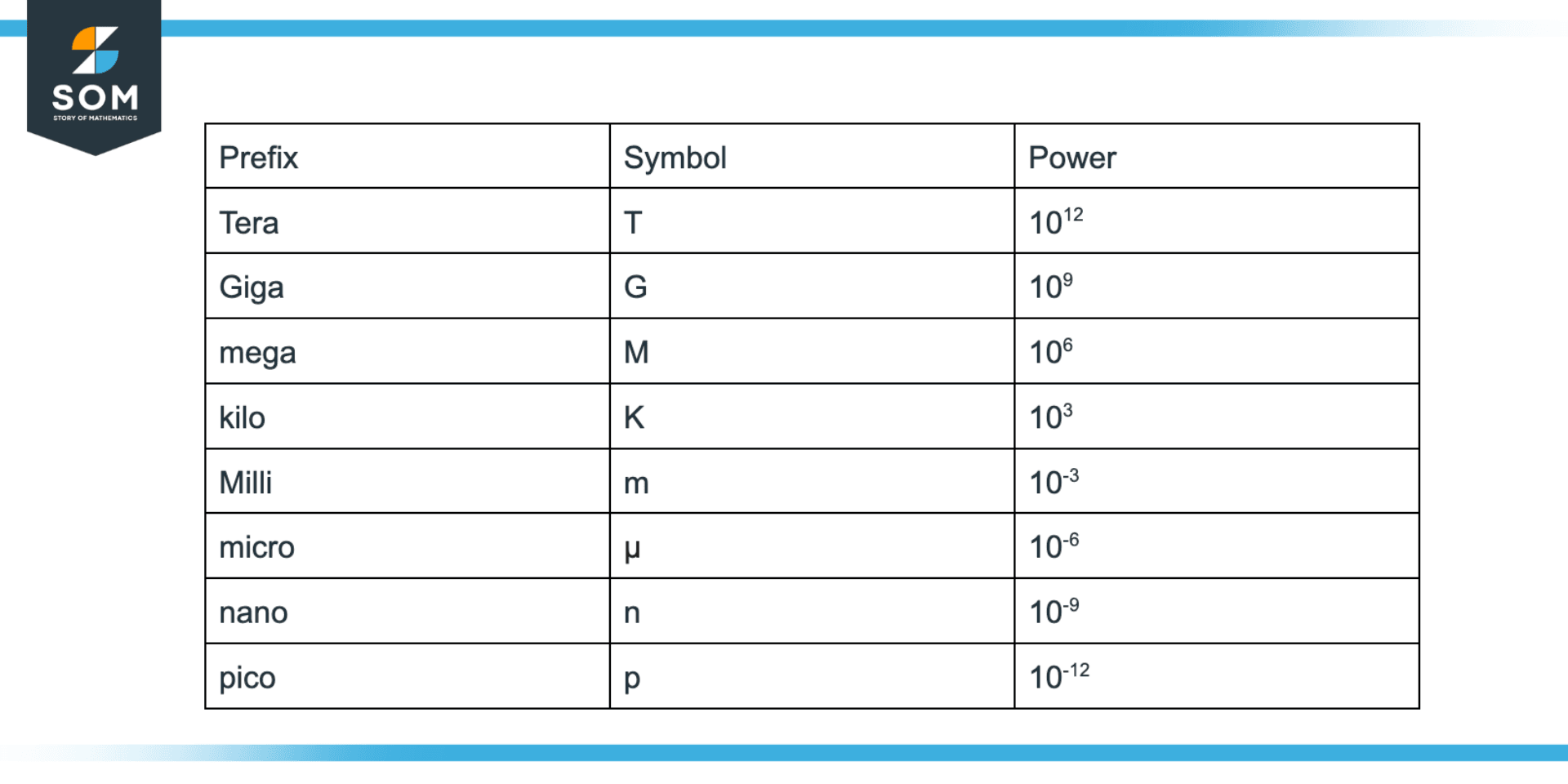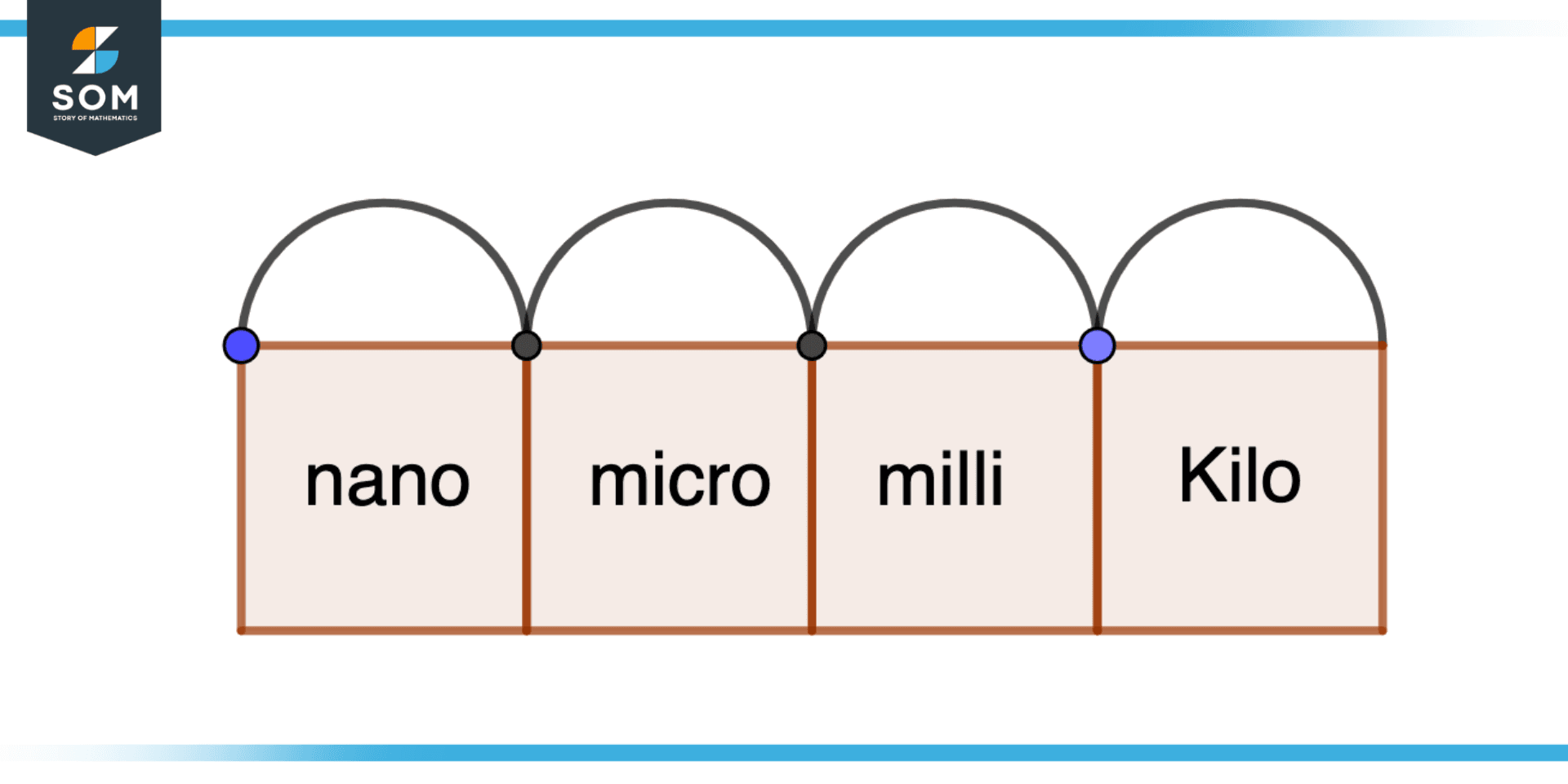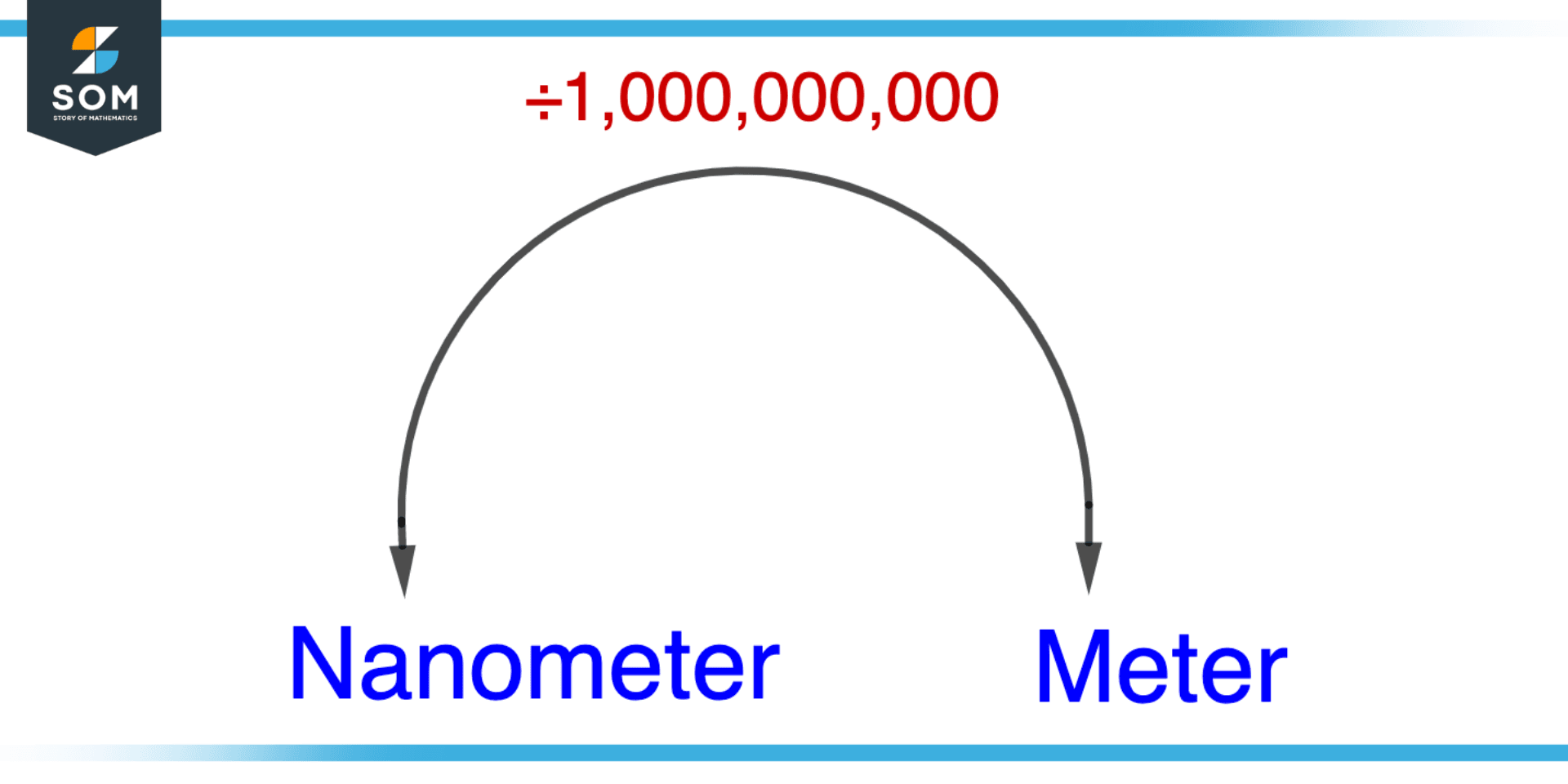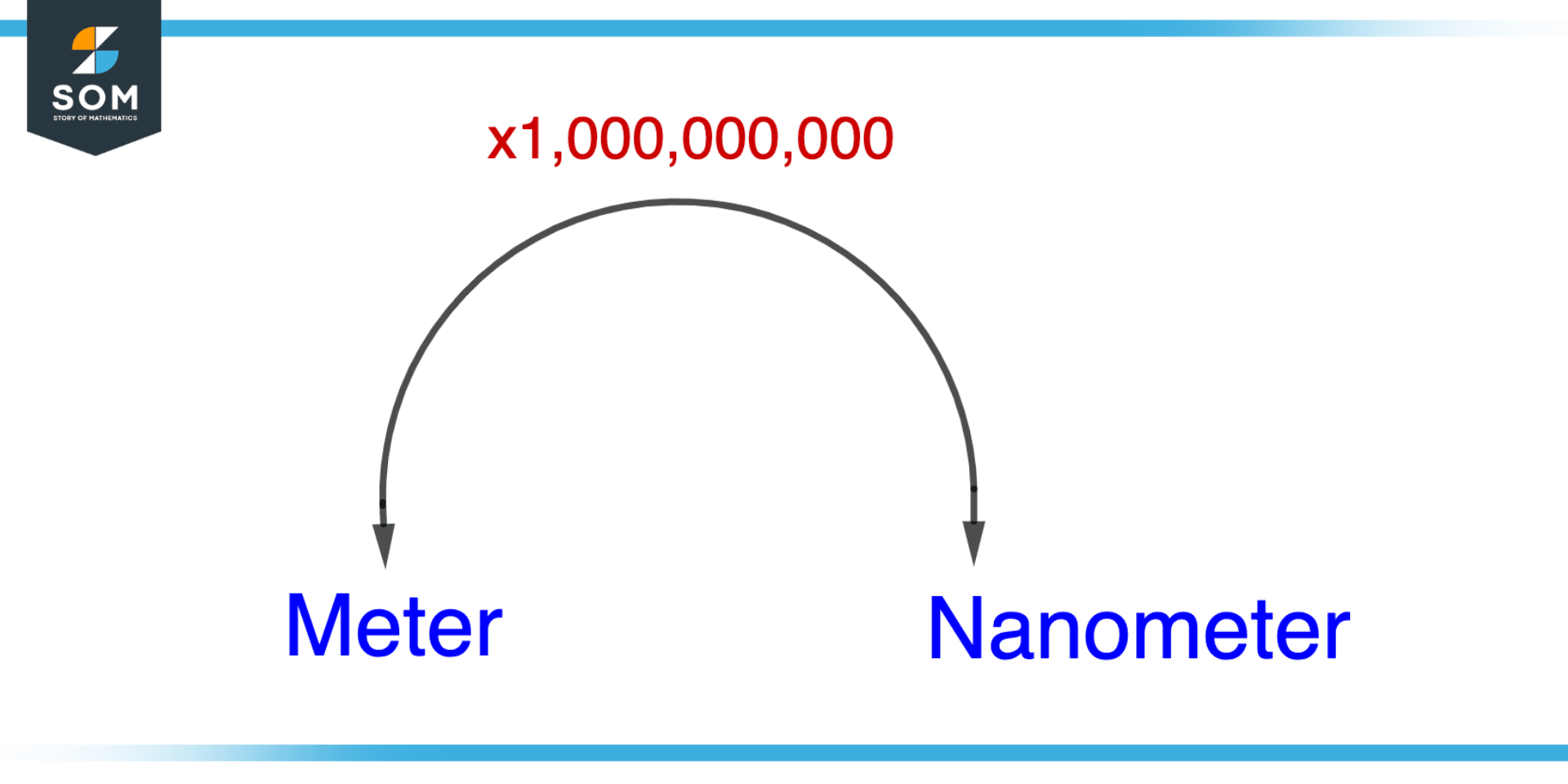JUMP TO TOPIC
Nano|Definition & Meaning
Definition
One billionth (1/1,000,000,000) of a unit of measurement is denoted by the prefix known as “nano-.” It is frequently employed in the context of scientific measurements, such as in the study and usage of incredibly small structures and devices in nanotechnology.
Importance of Nano Prefix
In Metric System

Figure 1 – Table of some Prefixes
Nanometer
The length unit known as a nanometer (nm) is one billionth of a meter (1/1,000,000,000 meters).
The size of atoms, molecules, and other extremely small objects is frequently described using this extremely small unit of measurement. A nanometer is comparable to being 100,000 times smaller than a human hair’s breadth and 10 times smaller than a carbon atom’s diameter.
Nanosecond
A nanosecond is one billionth of a second (1/1,000,000,000 seconds) in length.
It is frequently used to gauge the length of extremely quick occurrences or processes because it is a very small unit of time. A nanosecond is roughly one-millionth of a millisecond and one-thousandth of a microsecond, respectively.
In Science and Technology
Nanometer
In science and technology, the term “nanometer” is frequently used to define the size of very small objects and structures, such as the parts of electronic devices or the architecture of biological cells.
They are also utilized by engineers and scientists that work with materials and structures that are only a few nanometers in size in sectors like nanotechnology. When employed in calculations and measurements, the metric unit of a nanometer is denoted by the letter “nm.”
Nanosecond
In science and technology, the term “nanosecond” is frequently used to characterize the speed of electronic devices and other high-speed operations.
For instance, the timing of electrical impulses in computer networks and the speed of a computer’s central processing unit (CPU) are frequently measured in nanoseconds.
In industries like telecommunications and radar technology, where extremely quick electromagnetic energy pulses are utilized to transmit and receive information, the nanosecond is also used. When employed in calculations and measurements, the metric unit of a nanosecond is denoted by the letter “ns.”
Properties of Nano
- It is typically used in conjunction with measures like meters, grams, and seconds to depict extremely small sizes or quantities.
- When used in calculations and measurements, it is referred to as “nano-“ and is a metric unit.
- As it enables the highly detailed expression of very small sizes and quantities, it enables a high degree of precision in measurements and calculations.
- It is frequently utilized by scientists and engineers who work with incredibly tiny materials and structures in disciplines including nanotechnology, biology, and electronics.
- To signify even smaller sizes and quantities, it is sometimes combined with other prefixes like “micro-“ (one millionth) and “pico-“ (one trillionth).
Applications of Nano
- Nanotechnology: Engineers and scientists working in the field of nanotechnology deal with materials and structures that are only a few nanometers in size. They might use tiny fibers or nanoparticles, for instance, to develop new materials with special qualities.
- Biology Research: Only a few nanometers in size, cells, and molecules are the focus of research in biology. For instance, they might employ imaging methods like electron microscopy to see the nanometer-scale architecture inside cells.
- Electronics: Nanometer measurements are frequently used in electronics to describe the parts of electrical devices. For instance, a microprocessor chip’s features might only be a few hundred nanometers in size.
- Medicine: To deliver medications to certain body areas, nanoparticles are frequently utilized in medicine. As an illustration, scientists are creating nanoparticles that can deliver chemotherapy medications directly to cancer cells, minimizing side effects from treatment.
- Energy Research: In the field of energy research, researchers are creating nanoscale materials for solar cells and other renewable energy sources. They might use nanoparticles, for instance, to make solar cells that are more effective and efficient.
Realization of Prefix Nano

Figure 2 – Nano prefix realization
- A human hair’s breadth is 100,000 times larger than a nanometer.
- A carbon atom’s diameter is about 10 times larger than a nanometer.
- The typical size of a virus is 100 nanometers.
- A DNA molecule has a diameter of roughly 2.5 nanometers.
- The diameter of a single red blood cell is 7,000 nanometers.
Conversion of Nano Prefix
Nanometer to Meter

Figure 3 – Converting Nanometer to Meter
To convert from nanometers to meters, follow these steps:
- Write the value in nanometers that you want to convert to meters.
- Multiply the value by 1/1,000,000,000 to convert it to meters.
Meter to Nanometer

Figure 4 – Converting Meter to Nanometer
To convert from meters to nanometers, follow these steps:
- Write the value in meters that you want to convert to nanometers.
- Multiply the value by 1,000,000,000 to convert it to nanometers.
Summary
The nano prefix denotes a 0.000000001 factor. It is frequently used to refer to extremely small quantities or dimensions in the scientific and technological fields. For instance, one can measure length or distance with nanometers, time with nanoseconds, and mass with nanograms.
The nano prefix is used to make extremely small quantities easier to communicate about and understands than they might otherwise be.
You can multiply the value in Nanos by the conversion factor to change from a unit with the nano prefix to the base unit. You can divide the value in the base unit by the conversion factor to convert from the base unit to a unit with the nano prefix.
Example for Nano
Example
We are given time in nanoseconds. Let’s say 500ns. Convert this into seconds and again convert it back to nanoseconds using the appropriate conversion factor.
Solution
To convert a quantity expressed in nanoseconds to seconds, you can use the following conversion factor:
1 second = 1,000,000,000 nanoseconds
To use this conversion factor, you can set up the conversion as follows:
X nanoseconds * (1 second / 1,000,000,000 nanoseconds) = Y seconds
Where X is the quantity in nanoseconds and Y is the quantity in seconds.
Nanoseconds to Seconds
To convert 500 nanoseconds to seconds, we can set up the conversion as follows:
500 nanoseconds * (1 second / 1,000,000,000 nanoseconds) = 0.0000005 seconds
So, 500 nanoseconds are equal to 0.0000005 seconds.
Seconds to Nanoseconds
To convert a quantity expressed in seconds to nanoseconds, you can use the following conversion factor:
1 nanosecond = 1/1,000,000,000 seconds
To use this conversion factor, you can set up the conversion as follows:
X seconds * (1 nanosecond / 1/1,000,000,000 seconds) = Y nanoseconds
Where X is the quantity in seconds and Y is the quantity in nanoseconds.
For example, to convert 0.0000005 seconds to nanoseconds, we can set up the conversion as follows:
0.0000005 seconds * (1 nanosecond / 1/1,000,000,000 seconds) = 500 nanoseconds
So, 0.0000005 seconds is equal to 500 nanoseconds.
These conversion factors allow you to move back and forth between nanoseconds and seconds. Just keep in mind to set up the conversion correctly and to utilize the suitable conversion factor.
All mathematical drawings and images were created with GeoGebra.
